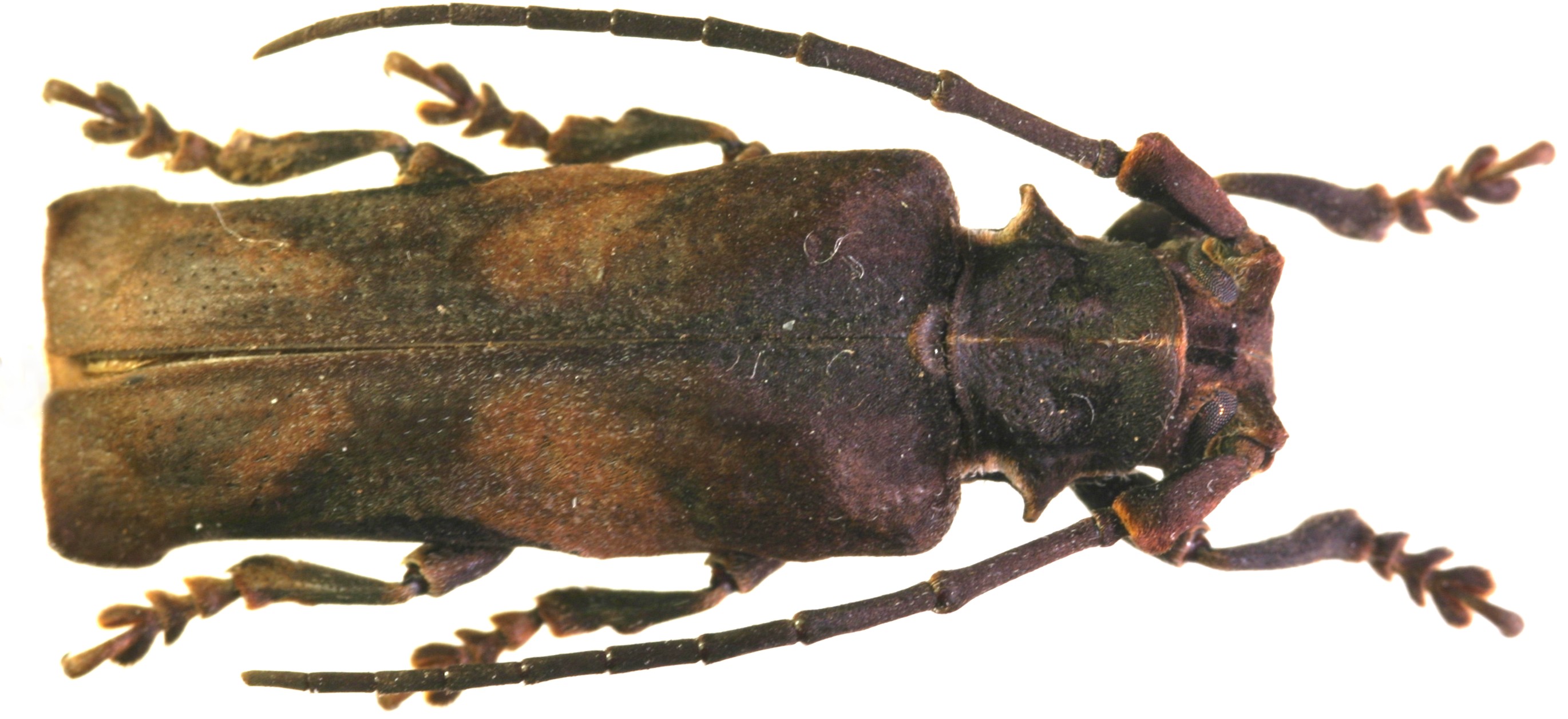| T O P I C R E V I E W |
| cerambyphil |
Posted - 17/03/2013 : 22:14:35

451.08 KB
Non, je ne lui ai pas coupé le bout des élytres. Original non ?
Sumatra, 25 mm. |
| 6 L A T E S T R E P L I E S (Newest First) |
| Xaurus |
Posted - 21/03/2013 : 00:39:42
Yes Dan you are right, I think its T. angularis but the surface of the spm is a bit adhered.
|
| cerambyphil |
Posted - 20/03/2013 : 21:52:06
Merci Dryobius. Cette espèce à déjà été confirmée par Francesco sur un post de Gérard :
http://www.cerambycoidea.com/forum/topic.asp?TOPIC_ID=12180
L'affaire est résolue ! |
| dryobius |
Posted - 20/03/2013 : 05:00:32
My apologies for a mistake....
After closer examination of this photograph, I am certain this is not Thylactus sumatrensis. The reason is that the specimen is too short, and the elytra have a definite post-median dark area. This is therefore (probably) Thylactus angularis Pascoe.
I have T. sumatrensis from Sumatra and Borneo and both specimens are over 35mm. They are wholly dark, almost brownish purple. The apex of the elytra are slightly different, too.
I would like to ask Xaurus to confirm this, as I believe he has T. angularis from Thailand. T. angularis is a widespread species occuring from Borneo to Thailand, so it likely occurs in Sumatra, too. |
| cerambyphil |
Posted - 17/03/2013 : 22:54:26
Et bien merci dryobius, encore un mystère de résolu ! |
| dryobius |
Posted - 17/03/2013 : 22:49:09
Thylactus sumatrensis Hüdepohl, 1987 (they attain lengths up to 35 mm). Occurs in Borneo, too. |
| Xavier |
Posted - 17/03/2013 : 22:30:17
Magnifique ! Extraordinaire !
Une Sthenias sans doute ? |


